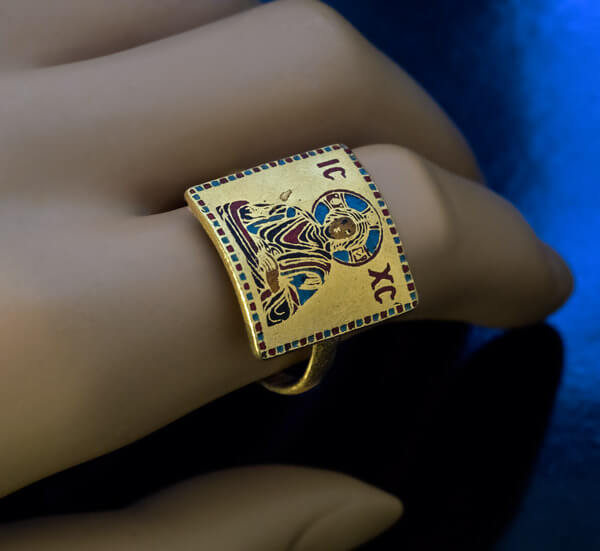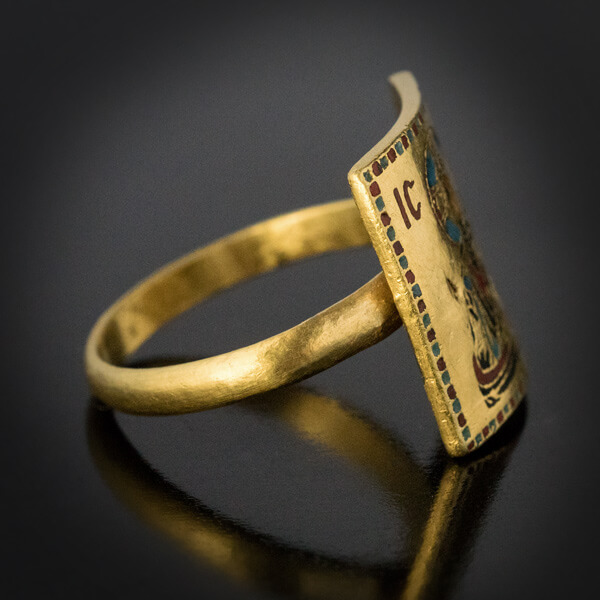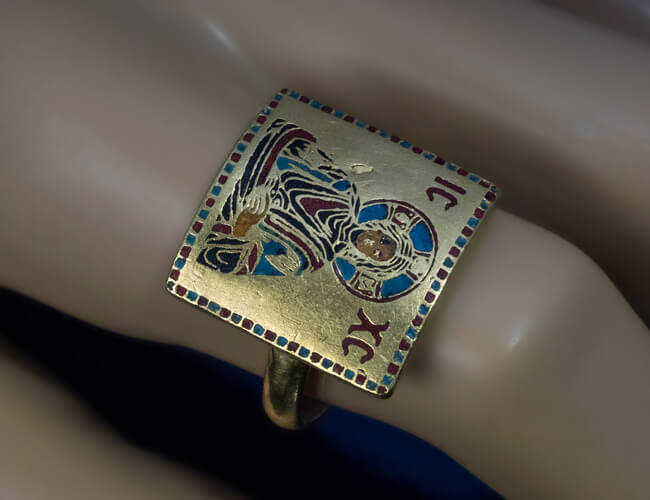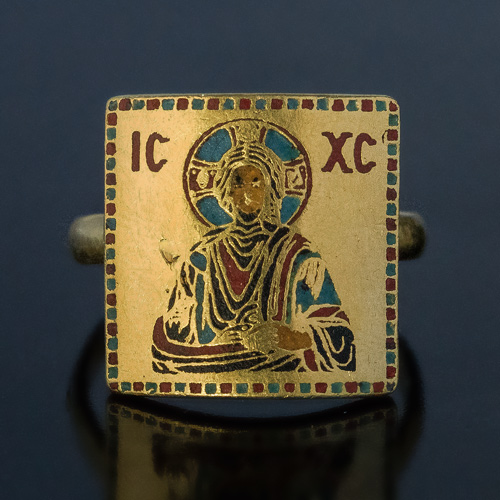Russian, probably St. Petersburg, circa 1880s – 1890s
Handcrafted in a high carat gold (approximately 23K), this ring is designed in the medieval, Byzantine style of the 11th and 12th centuries. The enamel depiction of Christ is flanked by ‘IC’ – ‘XC’, an abbreviated inscription in Orthodox Church for ‘Jesus Christ.’
The enamel design was realized using two enamel-application techniques – cloisonné and champlevé. Essentially, the design is first carved in, with fine flat gold wires being added to outline more intricate shapes within the carved out areas, and then the resulting individual cells are filled with enamel. The enamel plaque was fired in a kiln at a high temperature to ensure it adequately bonded with the gold. Lastly, the face of the ring was polished to create a flat shiny surface.
Size of the enameled plaque 20 x 18 mm (2/3 x 11/16 in.)
Condition: intact enamel, a small scratch in field left to the bust.
Weight is 13.87 grams
Ring size 12.5 (22 mm) resizable
Byzantine style enamel jewelry was in fashion (primarily among St Petersburg aristocracy) after the renowned Alexander Zvenigorodsky collection of Byzantine enamels was lavishly published in limited edition of 200 numbered copies in Russian, French, and German in 1892. The book was dedicated to Tsar Alexander III. At the time, it was one of the most expensive illustrated books ever printed.
Jewelry made in Byzantine style in the late 1800s – early 1900s was exclusive and one of a kind. Carl Faberge, among others, produced some pieces (mostly cross pendants) in tradition of Byzantine enamel art.
This is the first Byzantine-style enameled ring we have ever seen. Clearly, this ring was privately commissioned and almost certainly is unique.
After the death of Zvenigorodsky, his collection was offered for purchase to the Imperial Hermitage museum. A commission of experts summoned by Tsar Nicholas II could not reach agreement on the price with the owners. Eventually, the collection was sold to J. Pierpont Morgan, who gifted it to the Metropolitan museum in New York city in 1917.






